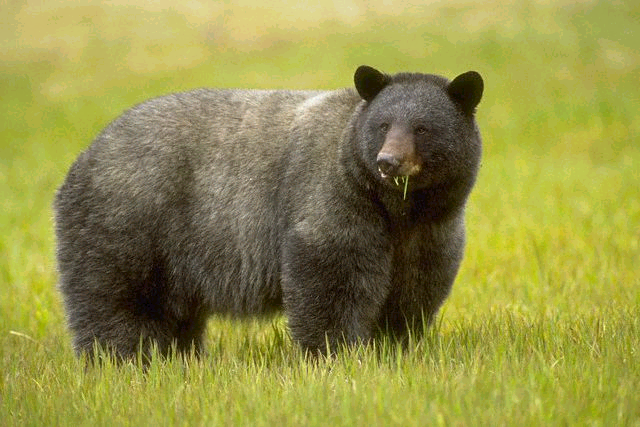
The newest wildlife species to see a starling population explosion in the U.S. is the black bear.
The black bear population of the United States is estimated to have grown by up to 35 percent between 1988 and 1995, from a population range of 253,000 to 375,000 bears in 1988, to a population of 339,000 to 465,000 bears by the mid-1990s.
Since the mid-1990s, the black bear population in the U.S. has continued to grow very rapidly, and its range is extending into areas where it had once been extirpated (such as Ohio and North Dakota).
All of this is good news, and a sign of nation-wide environmental improvement. As rough as we have been on the environment, Mother Nature really is as tough as an old boot and generally will recover if we stop beating her to death. A country with half a million black bear is country with a lof of land left for fox, possum. groundhog, coyote, wolf, deer, moose, alligator, badger, beaver, pine marten, hawk and eagle.
A sustained black bear population growth of 3 percent per year (which seems to be occurring despite legal bear hunting in 27 states) could mean that the U.S. black bear population might rise to nearly one million bears by 2025.
States with the largest black bear populations include Alaska (which has about 100,000 black bears), Maine, Idaho, California, Minnesota, Montana, New Hampshire, New Mexico, New York, Oregon, Pennsylvania, Virginia, Wisconsin, Oregon, Washington, and West Virginia.
As an "indicator species," the dramatic increase in the black bear population of the U.S. suggests that wildlife and habitat management is improving in much of the U.S., and that there are still quite a few large blocks of relatively unspoiled habitat left.
Depending on the type of land (wetland, dry forest, riparian area, etc.) and climate conditions, individual black bears typically have a home range of 5,000 to 30,000 acres, while bear biologists estimate that a healthy reproducing population of black bears requires a minimum of 500,000 acres of land.
In the state of Virginia (my home), we shoot about 1,500 black bear a year and the population is slowly growing.
No comments:
Post a Comment